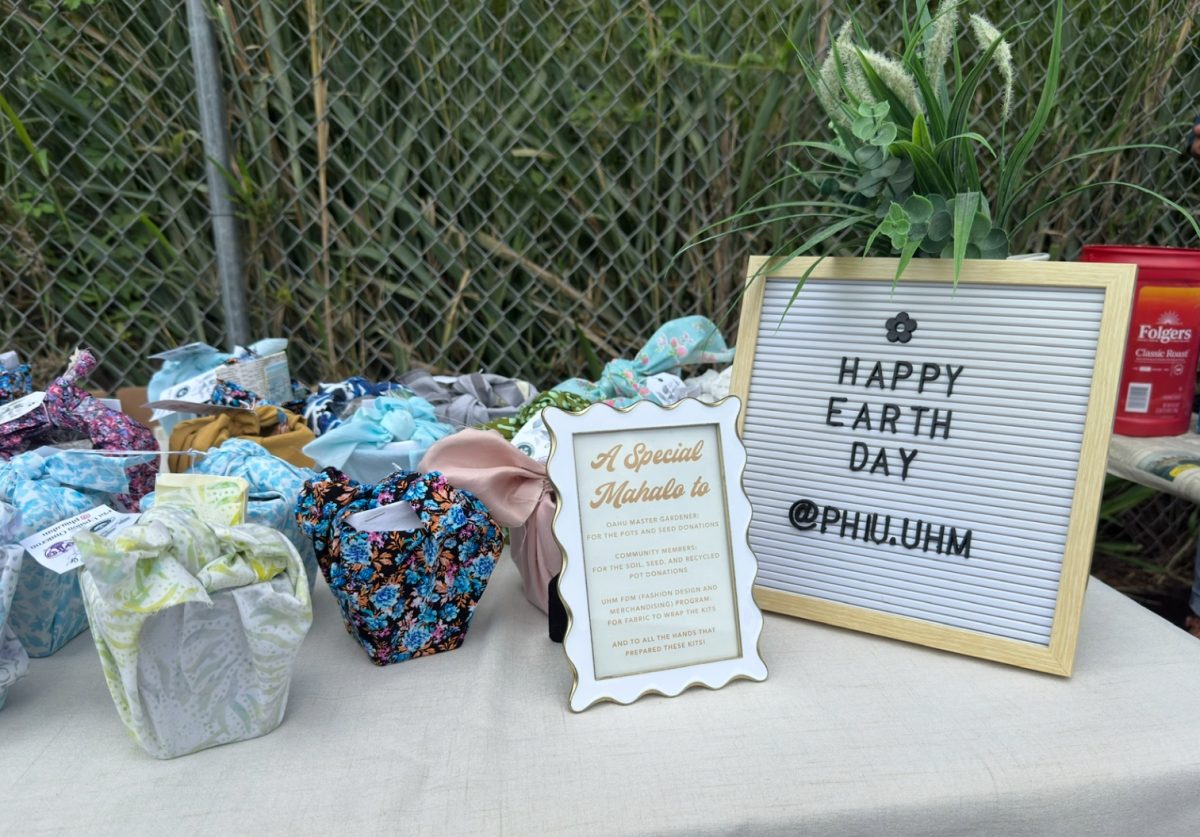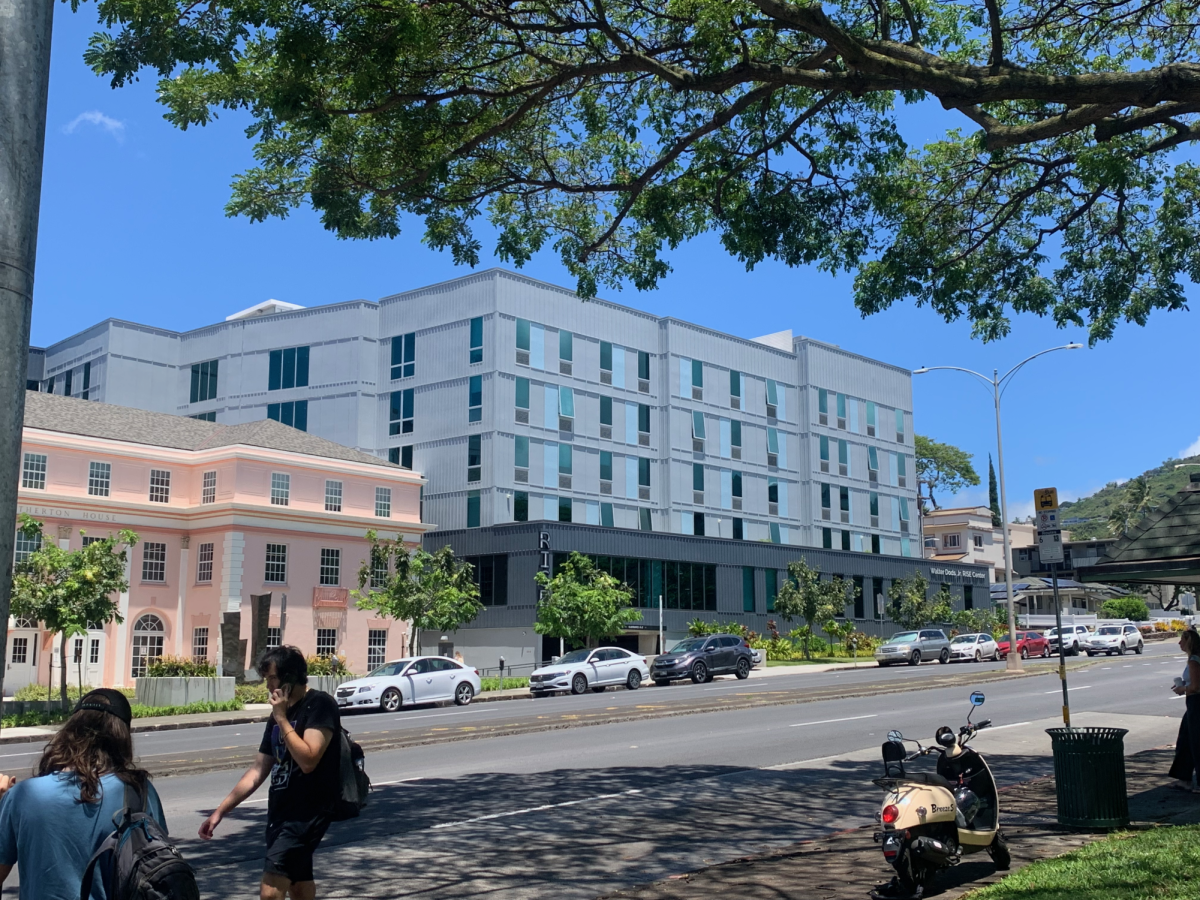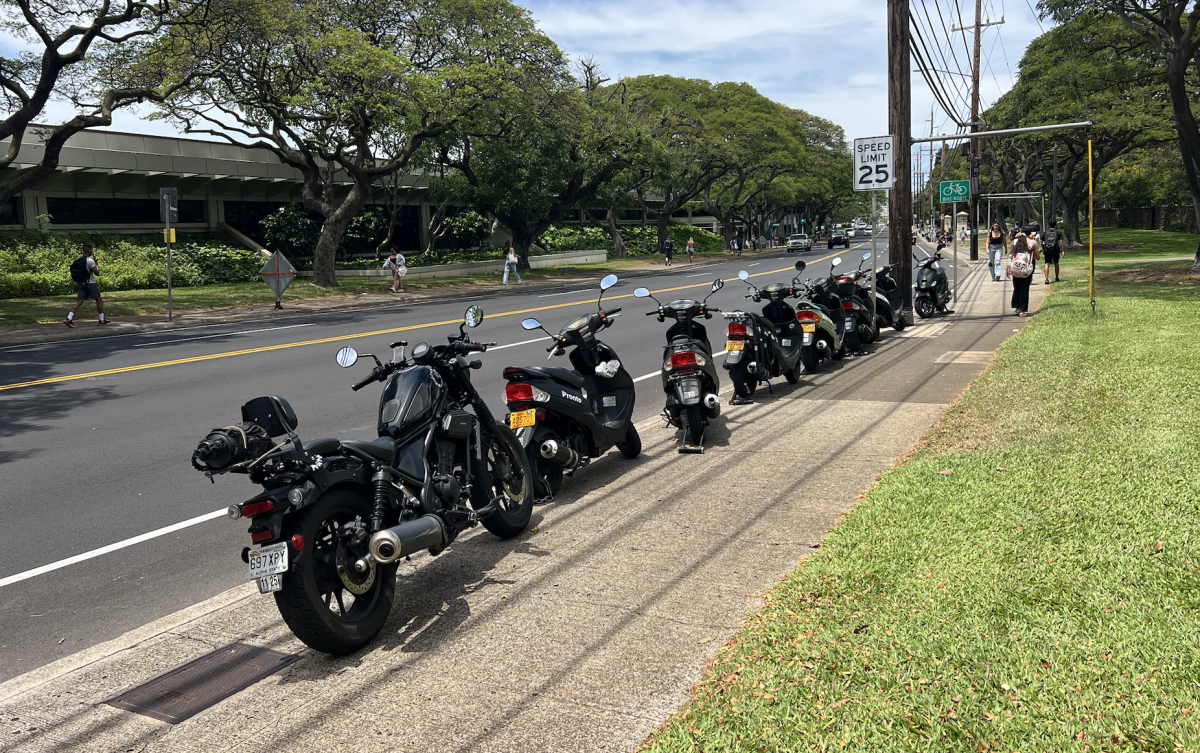On Thursday morning, Lexie Roper was in the middle of Italian class when a puddle of rainwater slowly started seeping underneath the door and into the classroom.
“It was a couple minutes after the power had flashed off while it was pouring outside, and I looked over and saw the rain start to come under the door,” said Roper, 21, a sustainability major. “My teacher tried to continue teaching, but she noticed none of us were paying attention because we were trying to pick up all of our stuff and move away from the water.”
There’s the idea that in the eye of a hurricane, all is calm and quiet. University of Hawaiʻi at Mānoa students involuntarily got to test out this hypothesis last week, as high winds and rain barraged the campus.
An emergency weather alert was sent out to Oʻahu residents Thursday afternoon, warning of harsh winds, rain, and rough conditions due to a storm moving through the islands. The alert strongly suggested people prepare for power outages and try to stay indoors, if possible.
But when classes are still in session and jobs still have to be done, staying indoors isn’t quite in the cards for many students.
For 23-year-old Brianna Murray, secondary education major, her normal routine was abruptly interrupted when sheets of rain started pouring down on her walk back to her apartment on campus. Murray believed class should’ve been canceled because the weather posed a dangerous threat to people’s safety, especially those that rely on walking or taking public transportation.
“I think when the literal weather channel is sending out an emergency alert, we should probably be taking that seriously,” Murray said. “We lost power at least two times, people were falling on their asses, and lightning was flashing around campus every few minutes and made tree branches fall down and hit buildings.”
Trees weren’t the only things getting up close and personal with some major buildings on campus. In the St. John Plant Science Laboratory, water started seeping into various classrooms, well before any weather alert was sent out.
If putting students in uncomfortable, damp situations was a race, this incessant storm would have lapped and crossed the finish line before its competition even started. Murray noted that Hale Wainani’s fire alarm was tripped by the wind, causing it to continue its purge-like, high-pitched screech for roughly two hours.
This meant that the students who complied with emergency evacuation protocols were stuck outside in the pouring rain, weighing the risk of staying outside and getting drenched while waiting for the “all clear,” versus going back into a possibly dangerous building to get shelter from the downpour.
Luckily, the Department of Public Safety arrived to turn it off and assured all drenched-bystanders, who had been crowding under any ledge that could possibly provide an ounce of refuge, that there was never a threat to begin with.
Although both Murray and Roper decided to use the cold, wet evening as an excuse to have a cozy night-in, this wasn’t the case for all students.
As seen on the Barstool UHM Instagram page, a group of male students used the flooded Dole St. to act like Eddie Aikau riding his 30-foot waves. They brought out boogie boards and either body surfed or attached a rope to the back of a friend’s truck while driving down the street, surely causing great entertainment for those watching from student housing and great fear for the drivers who had to avoid the slippery street-surfers.
These students declined an interview.
The deluge of water cascading campus and its surrounding area seemed to let up around 8 p.m. Which, luckily, is just in time for students who don’t want to miss out on the renowned “thirsty Thursday” – a name coined to mark the $8 deal on alcoholic pitchers at the campus-favorite bar, Rock Bottom Sports Bar & Grill.
Jasper Hansson, 21, public health major, moseyed home from work on his 25-minute walk back to Frear Hall, battling the relentless rain. But he didn’t see the storm as reason enough to stop him and his friends from celebrating finishing yet another hard day’s work.
“I didn’t think the rain was that crazy,” Hansson said. “This is what happens like every day in some place like the midwest, or even Canada.”
As with all things, the storm passed and Friday’s sunrise brought with it clear skies and the usual 80-degree weather that is so known and loved. The route 13 bus to Waikiki filled just as quickly as always, as students made their way to the beach after class.
If it weren’t for the rushing Mānoa stream, the metal grates still being slick enough to cause people to catch their footing, and the bright yellow warning tape marking off broken trees and electrical wires, it would be incredibly difficult to tell any storm had happened at all.
